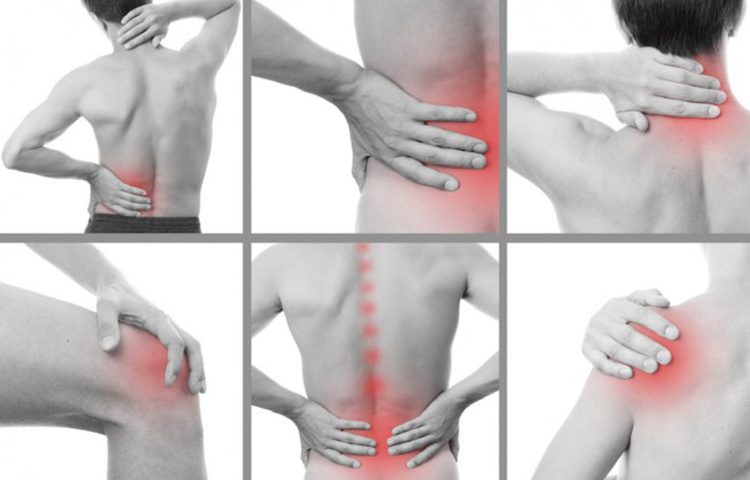Aching or pain is a common sensation that can affect any part of the body. It might range from minor discomfort to excruciating pain. Aching or pain can have various causes, such as injury, infection, inflammation, or disease. In this blog post, we will explore some of the most common types of aching or pain, their symptoms, causes, and treatment options.
What are the types of aching or pain?
There are many different types of aching or pain, but some of the most common ones include:
• Bone pain: This is a type of deep, penetrating pain that occurs when the bone is damaged or diseased. Bone pain can be caused by fractures, infections, tumors, or metabolic disorders. Bone pain often worsens with movement or pressure and may be accompanied by swelling, redness, or warmth.
• Joint pain: This is a type of pain that occurs in the area where two bones meet. Joint pain can be caused by arthritis, gout, bursitis, sprains, strains, or infections. Joint pain often causes stiffness, swelling, reduced range of motion, and difficulty moving the affected joint.
• Muscle pain: This is a type of pain that occurs in the soft tissues that support and move the bones. Muscle pain can be caused by overuse, injury, cramps, spasms, infections, or diseases. Muscle pain often causes soreness, tightness, weakness, and reduced flexibility.
• Tendon and ligament pain: These are types of pain that occur in the strong bands of tissue that connect bones to muscles (tendons) or bones to other bones (ligaments). Tendon and ligament pain can be caused by overuse, injury, inflammation, or degeneration. Tendon and ligament pain often causes tenderness, swelling, and reduced function.
What are the symptoms of aching or pain?
The symptoms of aching or pain can vary depending on the type and cause of the pain. Some common symptoms include:
• Sharp, stabbing, or throbbing sensations.
• Dull, aching, or burning sensations.
• Increased sensitivity to touch, pressure, or temperature.
• Reduced mobility or function of the affected area.
• Difficulty performing daily activities or tasks.
Some aching or pain may also affect other parts of the body besides the affected area, such as the head, chest, or abdomen.
What causes aching or pain?
Aching or pain can have many different causes depending on the type of pain. Some common causes include:
• Injury: This is one of the most common causes of aching or pain. Injury can result from trauma, such as falls, accidents, or sports activities. Injury can damage the bones, joints, muscles, tendons, or ligaments and cause inflammation, bleeding, or infection.
• Infection: This is another common cause of aching or pain. Infection can occur when bacteria, viruses, fungi, or parasites invade the body and cause disease. Infection can affect any part of the body and cause fever, chills, swelling, redness, or pus.
• Inflammation: This is a natural response of the body to injury or infection. Inflammation involves increased blood flow and immune activity in the affected area to fight off foreign invaders and promote healing. Inflammation can cause heat, swelling, redness, and pain.
• Disease: This is a less common but more serious cause of aching or pain. The disease can result from genetic factors, immune system disorders, hormonal imbalances, or metabolic problems. The disease can affect any part of the body and cause chronic or recurrent pain.
How are aching or pain diagnosed?
To diagnose aching or pain, a healthcare provider will usually ask about the history and characteristics of the pain. They may ask questions such as:
• When did the pain start?
• Where is the pain located?
• How severe is the pain?
• What does the pain feel like?
• What makes the pain better or worse?
• Do you have any other symptoms?
Then, your healthcare provider will perform a physical examination to look for signs of injury, infection, inflammation, or disease in the affected area. They may also order some tests to confirm the diagnosis or rule out other causes. These tests may include:
• X-rays: These are images that use radiation to show the structure and condition of bones and joints.
• Magnetic resonance imaging (MRI): These are images that use magnets and radio waves to show detailed views of soft tissues such as muscles, tendons, and ligaments.
• Blood tests: These are tests that measure levels of blood cells, antibodies, enzymes, hormones, or other substances that may indicate infection or disease.
• Urine tests: These are tests that measure levels of chemicals or microorganisms in urine that may indicate infection or disease.
How are aching or pain treated?
The treatment of aching or pain depends on the type and cause of the pain. Some general treatment options include:
• Medications: These are drugs that help relieve pain and inflammation by blocking nerve signals or reducing immune response. Some common medications include:
• Analgesics: These are drugs that reduce mild to moderate pain by interfering with nerve signals in the brain. Examples include acetaminophen (Tylenol®) and nonsteroidal anti-inflammatory drugs (NSAIDs) such as ibuprofen (Advil®) or naproxen (Aleve®).
• Opioids: These are drugs that reduce moderate to severe pain by binding to opioid receptors in the brain and spinal cord. Examples include codeine (Tylenol® #3), hydrocodone (Vicodin®), oxycodone (OxyContin®), morphine (MS Contin®), and fentanyl (Duragesic®).
• Antidepressants: These are drugs that help treat chronic pain by altering brain chemicals that affect mood and perception of pain. Examples include amitriptyline (Elavil®), duloxetine (Cymbalta®), and venlafaxine (Effexor®).
• Anticonvulsants: These are drugs that help treat nerve-related pain by stabilizing nerve activity in the brain and spinal cord. Examples include gabapentin (Neurontin®), pregabalin (Lyrica®), and carbamazepine (Tegretol®).
• Corticosteroids: These are drugs that help treat inflammation by suppressing immune system activity and reducing swelling. Examples include prednisone (Deltasone®), methylprednisolone (Medrol®), and dexamethasone (Decadron®).
• Physical therapy: This is a form of treatment that involves exercises and movements to improve strength, flexibility, mobility, and function of muscles, joints, and bones. Physical therapy can help reduce pain by increasing blood flow, reducing stiffness, improving posture, correcting alignment, and preventing further injury.
• Massage therapy: This is a form of treatment that involves applying pressure and manipulation to soft tissues such as muscles, tendons, and ligaments. Massage therapy can help reduce pain by relaxing muscles, improving circulation, and releasing endorphins (natural painkillers), and reducing stress.
• Acupuncture: This is a form of treatment that involves inserting thin needles into specific points on the body. Acupuncture can help reduce pain by stimulating nerves and releasing endorphins (natural painkillers).
• Surgery: This is a form of treatment that involves making incisions and repairing or removing damaged tissues or structures in the body. Surgery can help reduce pain by correcting deformities or abnormalities that cause pressure or irritation on nerves or blood vessels.
How can aching or pain be prevented?
Some aching or pain cannot be prevented completely but some steps can be taken to reduce the risk or severity of developing them. Some prevention tips include: – Identifying and avoiding potential triggers or causes of aching or pain such as injury infection inflammation or disease. Practicing good hygiene and washing hands frequently to prevent infections. Use protective equipment such as helmets gloves pads braces splints casts crutches wheelchairs walkers etc when engaging in sports activities work activities hobbies etc to prevent injuries. Warming up before exercising stretching after exercising cooling down after exercising resting between exercises drinking plenty of water staying hydrated eating a balanced diet getting enough sleep managing stress levels etc to prevent overuse injuries cramps spasms etc. Following your healthcare provider’s instructions for taking medications treating chronic conditions monitoring health conditions etc to prevent complications side effects flare ups etc.
What is the outlook for people with aching or pain?
The outlook for people with aching or pain depends on the type and cause of the pain. Most aching or pains are mild and resolve within a few days or weeks with proper care treatment However some aching pains may be chronic and recurrent and require long-term management monitoring Some aching pains may also indicate a serious underlying condition that needs prompt diagnosis and treatment.



